Blood Secrets: Chronicles of a Crime Scene Reconstructionist Read online
Page 12
“I did,” I told him. “You’ll never believe what caused those blood patterns. This couple has a dog, don’t they.”
“Yeah,” he said, surprised. “They do.”
“Must be a big dog, judging from the size of that bed,” I said, pointing to the edge of the photo, where part of a large, round dog bed was visible. There was a blanket draped over it just like one my in-laws had for a dog at their house back in Oregon.
“As a matter of fact, it is.”
“I’m guessing the dog is just about the same height as those blood patterns,” I said. The blotches swam into focus as clearly as if a microscope lens had been adjusted. I could see now that they were imprints of a dog’s muzzle pressed repeatedly against the wall. Once you knew what you were looking at, you could even discern the outline of a canine nose in the middle of each. The swirls were tongue marks where the dog had licked its owners’ blood off the walls.
Blood Spatter 101
The fact that a family pet’s innocent actions could manage to baffle every crime expert scrutinizing the bloody scene just described is less surprising than you might think. It takes years of going to crime scenes to develop skill in interpreting blood patterns, years of encountering bizarre examples like the Las Vegas dog case to build a library of knowledge. My own mistakes have been my best teacher. By now, I’ve spent decades learning from them. Though academic research has brought invaluable advances to the field, no academic could walk into a room where a murder occurred and reconstruct the crime or use the blood clues to tell whether an eyewitness is lying about what he saw. To do that, you need savvy, street sense, and a lot of experience with witnesses, suspects, and dead bodies.
But I can teach you the basics of beginning blood pattern analysis to help you develop a foundation—one you could never build by watching CSI or other crime dramas. If you were a homicide detective, a medical examiner, or another crime-solving professional sitting in on one of my workshops to sharpen your skills of detection, here are some of the bloodstain fundamentals we would cover, along with the basics on bullet trajectories and wound patterns.
As you know from the chapters you’ve already read, the stains that result when blood spatters are divided into three main categories. These categories are determined by how much force went into the source providing the blood (usually a human body, but in my experiments a puddle of cows’ blood) and the size, shape, and number of blood droplets that resulted from the impact. The three basic types of stains you find at murder scenes are low-velocity spatter, medium-velocity spatter, and high-velocity spatter. Being able to distinguish one group from another by the telltale lines, voids, and other calling cards they leave can tell you what kind of weapon was used, how the murder unfolded, and sometimes even the killer’s identity.
A crime scene’s combination of blood spatter types.
Low-Velocity Blood Spatter
Low-velocity blood patterns occur when a minimal amount of force is used to spatter blood or when gravity alone causes blood to drip. They are characterized by large drops, much bigger than the ones you see in medium-or high-velocity blood spatter. A trail of blood droplets that dribbled from a murderer’s hands, clothing, or weapon as he left the crime scene would qualify as a low-velocity blood pattern. So would blood that dripped or flowed from a victim’s wounds as he struggled to get away or reach for a phone to call for help.
Another common low-velocity pattern is blood-into-blood—where blood drips repeatedly into an existing pool or puddle of blood, as in the John Lee Hipsher throat-cutting case or the castrations we used to do on the bulls at our farm. One of its hallmarks is satellite spatter—smaller droplets that bounce out to the sides of a larger central pool when they hit it. Being able to read blood-into-blood patterns helps you gauge the duration of an attack and the position of both attacker and victim. In the Hipsher case, it told us the victim bled for quite some time before he died and provided a vital clue in distinguishing murder from self-defense.
Blood transfers occur when an object that has wet blood on it comes in contact with another object. Let’s say a killer hoping to hide the evidence of his crime drags his victim’s body to his car, leaving a bloody swath behind him in the grass. Then he sets the hammer he used in the murder down momentarily while he hoists the body into the trunk, creating a bloody imprint of part of his weapon on the pavement next to the car. Both marks would be classified as blood transfers.
Blood-into-blood
The sorts of transfers cops find most often at crime scenes are hair transfers, fabric transfers, hand transfers, and weapon transfers. Each generates a distinctive pattern. The blood left on the barn wall in the Donna Howard “horse kick” case, as you’ll recall, left a classic hair transfer pattern on the wood—long, thin symmetrical lines that looked almost as if a paintbrush had been dragged over the surface. Blood is often heaviest at the point of contact, with the lines tapering off in the direction the blood source moved. Had Howard’s husband’s version of events been true, we would have seen a hair impact pattern instead—a much more chaotic, random cluster of thick and thin overlapping lines with some satellite spatter. Blood has to have time to pool in the hair in order to create an impact pattern—something that didn’t happen in the Howard murder.
Hair impact
The blood smeared inside Eric Humbert’s Chevy hatchback in the Green Thread Mystery left a unique fabric transfer pattern that eventually clued us in to the fact that a body wearing a ribbed winter hat had been shoved into the storage space, the bloodied cap brushing the car’s upholstery as it entered. Obviously, different types of hair (straight, curly, short, long) create slightly different patterns, as do different types of fabrics.
Any item soaked or spattered with wet blood can leave a transfer pattern at a crime scene. Say the hypothetical hammer killer was having trouble moving his victim’s body, so he wrapped it in a blanket or plastic drop cloth to make it easier to drag. If his victim’s blood soaked through the blanket or leaked through a hole in the plastic, investigators would spot a transfer pattern showing that something bloody had been dragged through the grass, assuming the blood was still wet when he moved the body. If he stepped in his victim’s blood when he was wrapping up the body, the bloody footprints his shoes made would be classified as a transfer pattern, too.
A swipe refers to blood that gets smeared as you move a bloody source across an unsoiled surface. Maybe in his hurry the killer just described slammed his trunk, failing to notice that his fingertips brushed the exterior of his car and left blood on it. If so, he would leave a classic blood swipe on the car. When a swipe is feathered on one side, it usually suggests that Whatever or whoever made the mark moved in the direction of the feathering.
Hair swipe
Hand swipe
Fabric swipe
You get a wipe pattern, by contrast, when you drag an object through an existing bloodstain, removing sections of the blood. For example, the incriminating marks we found on the wall behind the bed in Daniel Pierce’s apartment showed wipe patterns—evidence that someone (Pierce’s murderous roommate, Socrates Ladner, as we later found out) had rubbed a washcloth through bloodstains in an attempt to clean them up.
Thanks to advances in forensic technology, we can now retrieve a wealth of information from blood transfer patterns that would have gone undetected in the past. Chemical luminescence tests using Luminol and similar chemicals in a darkened lab reveal traces of blood on fabric that would otherwise be invisible. Presumptive tests with amido black and phenolphthalein react with proteins in the blood and trigger a color change. (With amido black, blood shows up purple; with phenolphthalein, it turns pink.) These are followed by confirmatory tests using blood revealers like ABA cards, Hemi-Trace kits, and Takayama microscopic tests. Such methods not only uncover traces of blood hidden on cloth, they also allow us to get identifiable fingerprints from bloody hand transfers, even if the perpetrator was twisting or wadding up the cloth as he gripped it. Blood reagents like
Luminol will also unmask flecks of dried blood spatter too small to discern under a microscope, even when the fabrics have gone through a washing machine.
In a criminal case, the police or prosecutor could have experts conduct lab tests to confirm that the blood was human and use DNA-typing technology to pinpoint the blood donor’s identity, even if it’s decades old or if only minuscule amounts of it remain to test. Scientific data often provide the missing piece of the crime-solving puzzle. They can reinforce or redirect an entire investigation. And they can form the linchpin or the fatal hole in the prosecution’s or defense’s case.
Case Study: The Knife Prints on the Bedspread
Both weapon and hand transfers played a damning role in the conviction of Brett X. Hartmann for the September 1997 mutilation murder of Winda Snipes in Akron, Ohio. When police discovered Snipes’s nude body in her apartment after several anonymous 911 calls, even veteran detectives were appalled at what they saw. The forty-six-year-old woman had been stabbed more than 130 times, gagged, strangled with an electrical cord, one ankle bound to her bed, her throat slit twice, and her hands cut off. Her hands have never been found.
Police soon arrested Brett Hartmann, a cook at the Quaker Square Hilton, who had been hovering around the crime scene, approaching detectives and asking questions when Snipes’s body was found. Hartmann told the police he had met Snipes the night before her death at the Inn Between Bar and had consensual sex with her, as he had done on several other occasions, then returned to her apartment a day later and found her body. Panicked, thinking that he would be the prime suspect, he tried to wipe away all evidence that he had been there and then called 911.
That might have explained the bloody fingerprint Hartmann left on the white plastic chair police found on top of Snipes’s body, but not the bloody T-shirt detectives retrieved from under his own bed’s head-board or Snipes’s watch, which they found on his dresser when they searched the apartment he shared with his mother. His bizarre, antsy behavior at the murder scene and references to the victim as a “psycho bitch” and a “whore” who “got what she deserved” didn’t help his case, either.
Hartmann claimed he had been at home talking on the phone with his girlfriend at the time of the murder, but prosecutor Becky Doherty believed the evidence suggested otherwise and asked me to give an opinion. She and I examined the bloody bedclothes and T-shirt closely. Both bore the same peculiar bloodstains—a series of linear patterns, each made up of dozens of tiny parallel lines straight as arrows.
“What caused them?” Doherty wanted to know.
I had to confess that I was stumped. Like the dog-muzzle prints, these were a first. Determined to find out what created them, I spent hours at my lab in Portland armed with stage blood, white fabric, and a variety of objects—fabrics, house hold appliances, knives with unusual blades. One by one, I dipped them in blood and pressed them against the sheet, noting the pattern they made and ruling them out. At last I tried a knife with a serrated blade. The pattern was identical to the one in the blood evidence.
Backing up my theory about what caused the blood transfers was the newly released autopsy report: The medical examiner noted that whoever removed Snipes’s hands showed almost surgical precision, cutting through ligament without nicking any bone. The process would have taken considerable time and effort, he observed. The killer would have had to cut a section of flesh, set down his knife while he twisted and pulled the limbs apart to separate muscle and sinew, then pick up his weapon again to continue the laborious effort of severing the hands. He also noted that at least some of the sawing was done with a serrated blade.
The combination of voids, wrinkles, and bloody lines on the shirt suggested that a serrated knife covered in wet blood had been placed on it repeatedly while the garment was lying flat rather than being worn. In fact, when you hung up the bloody bedspread, you could discern a void where an object roughly the same size as the T-shirt had been lying on it. The fact that the vast majority of the transfers from the serrated blade were on the right side of the bedspread, the one next to Snipes’s body, bore out the coroner’s suggestion—that the woman’s killer had set down his knife and picked it up again numerous times while he switched between cutting and tugging at her wrists.
Hartmann had both skill with and access to knives. Local authorities got a search warrant and checked his locker at work. Sure enough, it held a fabric case with knives—one of which was missing. Since none of the remaining cutlery had a serrated edge, it was probable that the missing one did. But like Snipes’s hands, the vanished knife from Hartmann’s set has never been found.
That wasn’t the only incriminating blood evidence, however. When police found Snipes’s body, her leg was still draped over her bed, tethered by her fettered ankle. On the bedspread under her calf we found a subtle hand transfer stain. We cut out the bloody section and had it flown to the King County Sheriff’s Office in the state of Washington under the watchful eye of a detective. (It’s always advisable to have a detective from the local force accompany evidence for safekeeping when it’s transported.) When it reached the lab in King County, it was bathed in amido black and revealed a fingerprint.
Using traditional latent fingerprint examination, fingerprint expert Patrick Warrick of King County identified the print as Hartmann’s. Warrick also examined the transfer stain using digitally enhanced imaging, which allows an expert to photograph a bloody print, upload it to a computer, subtract the fabric and other extraneous matter from the image electronically, then adjust color and contrast to maximize readability of the fingerprint on-screen. Scrutinizing the digital print, Warrick reached the same conclusion: It belonged to Hartmann. He brought the computer with the digitally enhanced image to Akron with him to exhibit during the trial.
In addition to testimony from Warrick, Doherty called a coworker of Hartmann’s to the stand who claimed the defendant had remarked in August 1997 that O. J. Simpson could have disposed of incriminating fibers, hair, and skin under his victims’ fingernails by cutting off their hands. One of Hartmann’s fellow inmates at the Summit County Jail also appeared in court and told jurors the defendant had confessed the murder to him and described cutting off Snipes’s hands.
The prosecution asked me to testify about the blood evidence. Over the years, I’ve learned that the best way to help juries understand is to keep things simple and visual. If you present evidence without a reconstruction, it’s hard for them to visualize what you’re describing and they tend to get confused. So I brought in stage blood and white fabric and dipped a serrated knife in it, then pressed it against the fabric to demonstrate the pattern it made. Doherty and I also hung up the real bedspread covered in Snipes’s blood so jurors could compare the two.
On the witness stand, Hartmann claimed he got Snipes’s blood on his T-shirt when he tried to pick her up to see if he could revive her. To show the physical impossibility of this, I reenacted it for the jury. I had an assistant prosecutor lie on a blanket on the courtroom floor with one ankle propped on a chair to simulate Snipes’s tethered leg while I tried to pick her up. The jury could see how clumsy and awkward it would be to lift a person lying in that position without either kneeling behind them and grasping them under the shoulders or grabbing their forearms and pulling them up, an unlikely choice given Snipes’s mutilated wrists. Even if Hartmann had managed to lift the dead woman by pressing his chest against hers, the jurors could see why I concluded that the act wouldn’t have left so much blood covering the front of his T-shirt. Nor, in my opinion, would it have created the particular patterns we saw on the garment. Given the estimated time of death and the time Hartmann said he reached Snipes’s apartment, the victim’s blood would have been dry. Even if he mistook the time and arrived when her blood was still wet, I testified that his actions would have left large smears on his shirt—not long, precise linear patterns.
It didn’t take Hartmann long after that to change his story. In his new version of events, he had never tried to
lift Snipes’s body or revive her. Instead, he said, he had left his shirt behind and the real killer must have set his knife down on it.
In the end, Brett Hartmann was found guilty of aggravated murder with prior calculation and design, tampering with evidence, and kidnapping, which made the crime a capital offense. He was sentenced to death and lost a number of appeals. Days before his scheduled execution in April 2009, Hartmann was granted a stay of execution so that a federal court could reexamine his case, though the Ohio Parole Board recommended against clemency and Governor Ted Strickland had not yet ruled on the recommendation at press time.
Following the Trail
As with other liquids, the shape and size of blood droplets are determined by the surface they land on. When blood falls from a ninety-degree angle, the airborne droplets are perfectly round, like liquid marbles. When they strike a hard, nonporous material such as a pane of glass, they spread out into perfectly round, flat, smooth-edged circles, like coins. Conversely, when blood drops onto a rougher, more porous surface—such as skin or even glass smeared with dirt—the uneven texture ruptures the droplets’ surface tension so that they have scalloped edges. The more porous the surface, the more distorted the droplets’ edges will be. Drop blood onto plywood or a pair of jeans, for instance, and you will see a dramatic starburst pattern that looks sort of like a drawing of a sun with rays stretching out in all directions—only red, of course.
Ninety-degree drops
Satellite spatter occurs when blood falls into blood and bounces or ricochets out to the sides. If blood hits a hard surface like glass, it creates no satellite spatter. But on a more porous or uneven surface—gravel, dirt, even skin—it satellites.

 Too Late to Say Goodbye: A True Story of Murder and Betrayal
Too Late to Say Goodbye: A True Story of Murder and Betrayal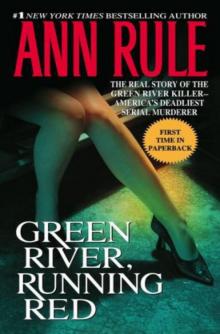 Green River, Running Red
Green River, Running Red Bitter Harvest
Bitter Harvest Dead by Sunset: Perfect Husband, Perfect Killer?
Dead by Sunset: Perfect Husband, Perfect Killer? Lust Killer
Lust Killer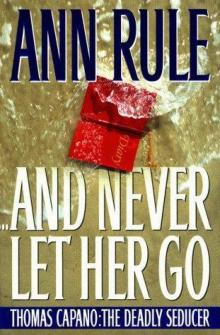 And Never Let Her Go: Thomas Capano: The Deadly Seducer
And Never Let Her Go: Thomas Capano: The Deadly Seducer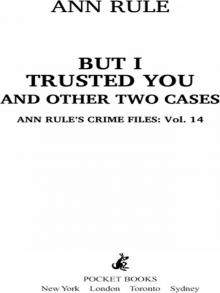 But I Trusted You and Other True Cases
But I Trusted You and Other True Cases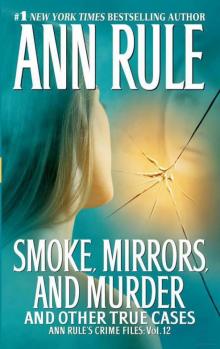 Smoke, Mirrors, and Murder and Other True Cases
Smoke, Mirrors, and Murder and Other True Cases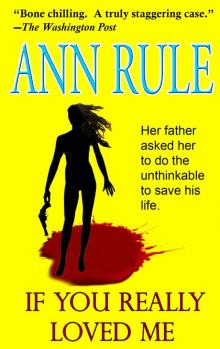 If You Really Loved Me
If You Really Loved Me Kiss Me, Kill Me and Other True Cases
Kiss Me, Kill Me and Other True Cases Fatal Friends, Deadly Neighbors and Other True Cases
Fatal Friends, Deadly Neighbors and Other True Cases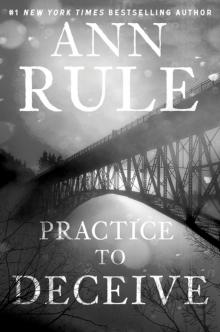 Practice to Deceive
Practice to Deceive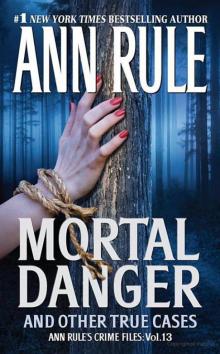 Mortal Danger and Other True Cases
Mortal Danger and Other True Cases Without Pity: Ann Rule's Most Dangerous Killers
Without Pity: Ann Rule's Most Dangerous Killers Everything She Ever Wanted
Everything She Ever Wanted A Fever in the Heart and Other True Cases
A Fever in the Heart and Other True Cases In the Still of the Night
In the Still of the Night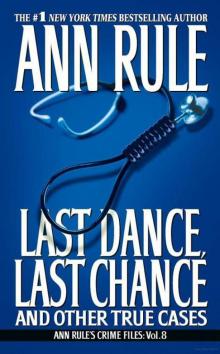 LAST DANCE, LAST CHANCE - and Other True Cases
LAST DANCE, LAST CHANCE - and Other True Cases A Rage to Kill
A Rage to Kill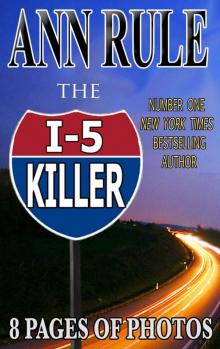 The I-5 Killer
The I-5 Killer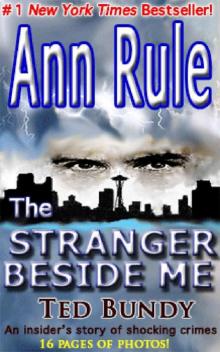 The Stranger Beside Me
The Stranger Beside Me Everything She Ever Wanted: A True Story of Obsessive Love, Murder, and Betrayal
Everything She Ever Wanted: A True Story of Obsessive Love, Murder, and Betrayal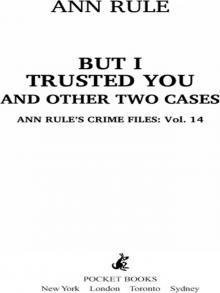 But I Trusted You
But I Trusted You Without Pity
Without Pity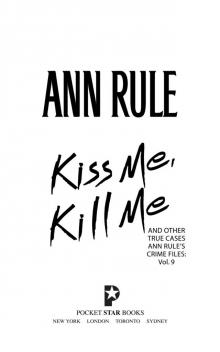 Kiss Me, Kill Me
Kiss Me, Kill Me Too Late to Say Goodbye
Too Late to Say Goodbye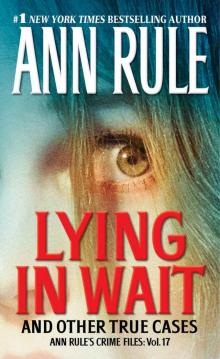 Lying in Wait
Lying in Wait Fatal Friends, Deadly Neighbors
Fatal Friends, Deadly Neighbors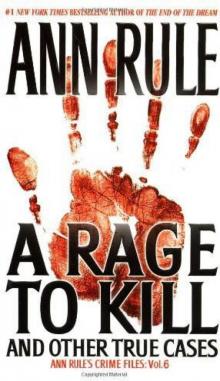 A Rage to Kill: And Other True Cases
A Rage to Kill: And Other True Cases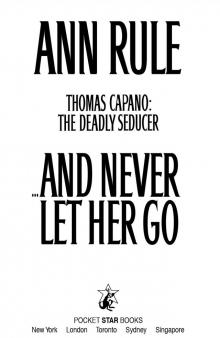 And Never Let Her Go
And Never Let Her Go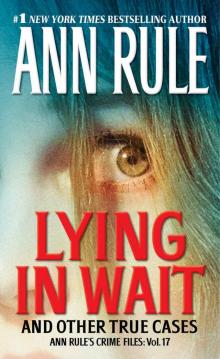 Lying in Wait Ann Rule's Crime Files Vol.17
Lying in Wait Ann Rule's Crime Files Vol.17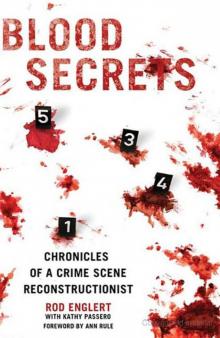 Blood Secrets: Chronicles of a Crime Scene Reconstructionist
Blood Secrets: Chronicles of a Crime Scene Reconstructionist No Regrets
No Regrets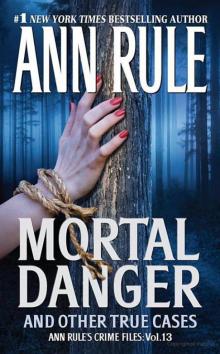 Mortal Danger
Mortal Danger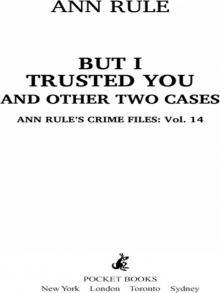 But I Trusted You: Ann Rule's Crime Files #14
But I Trusted You: Ann Rule's Crime Files #14 Empty Promises
Empty Promises Dead by Sunset
Dead by Sunset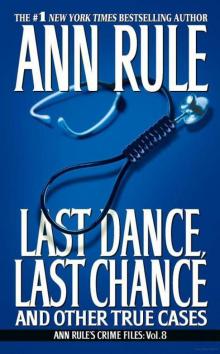 Last Dance, Last Chance
Last Dance, Last Chance Don't Look Behind You
Don't Look Behind You